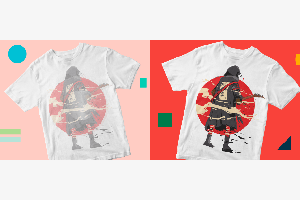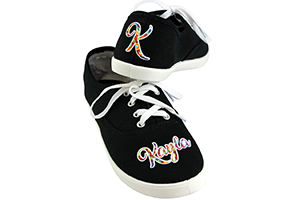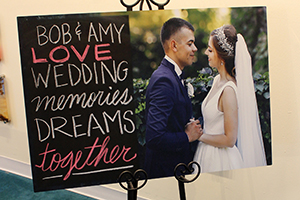October 5, 2017
The sublimation world has been expanding rapidly during the past few years. Part of this development has been the result of improvements in technology, such as sublimation-specific design software, easy-to-use color-management systems, higher-quality inks with expanded gamuts, faster printers, etc.
Another key element is the ever-increasing variety of sublimation-ready substrates, now numbering more than 1,000 products. Including everything from fishing lures and Mason jars to floor mats and tabletops, the list is incredible. This means that, as a sublimator, you have more revenue-generating opportunities than ever.
As the options grow, several trends are emerging, a few of which will be examined here. A key factor in all of these trends is a focus on raising the perceived value of the product. Because it’s only worth what someone is willing to pay, the focus must be increasing its perception of worth.
While firmly established in the printing world, full-bleed imaging is trending in sublimation and is fast becoming the norm for high-quality product decoration. The concept is to decorate a product via edge-to-edge embellishment. With virtually any graphic application, excessive white space tends to diminish visual quality. Replacing this empty space with a complementary background can add a high level of visual excitement, which leads to a higher perceived value and potential for higher margins. Full-bleed sublimation imaging is one of the simplest ways to increase profits and works for virtually any product except apparel, due to its size.
Unique Apparel Options
Many new sublimation-specific wearables are coming into the marketplace and consumers’ love of poly-performance apparel continues to grow. Aside from a wide range of tees and sweats, options include plackets, shorts, headwear, socks, bandannas, infant wear, hoodies, beanies, compression sleeves and more.
Adding to this trend is the fact that sublimatable apparel products are being produced in fashion cuts instead of only unisex styles. Thus, styles specifically designed for women and children, instead of just men, have begun to emerge.
New sublimation-friendly colors also are appearing, giving producers choices beyond white. In fact, as the demand for new products continues to grow, manufacturers are stepping up with new offerings, further fueling growth.
Large prints on apparel are the norm. With tabletop sublimation printers that can handle up to 13″ x 19″ media, and compact industrial units that can output 24-inch-wide images on roll paper, a wide-format system isn’t required to generate large images. Unique placements, such as wrap-around or offset, also are increasingly popular. Thus, virtually any shop can keep up with these trends by making a reasonable investment in equipment.
Plenty of non-apparel fabric products also are becoming more mainstream. Cheer bows are all the rage and there has been a huge uptick in demand during the past six months. Floor mats also are trending and have a huge range of applications. Custom logos easily can be applied to mats used in businesses, boats, RVs, vacation homes and more. These are examples of low-priced items that can provide big returns when personalized via sublimation.
Photos Rule
Current trends aren’t limited to substrates. Photographs have long been a staple of sublimation imaging, but they now are being incorporated into virtually every application category. An award product with a photograph always will command a higher margin than one without.
The same goes for signage, as photographs can deliver a variety of eye-catching messages. They also are being incorporated into promotional products, since an image presents a stronger brand message than a logo only.
Sublimation graphics also are evolving, which means more customization, brighter prints and richer details. Newer printing systems have more advanced inks, which typically results in better quality imaging. Just remember to read the specs when making your purchasing decision.
Most desktop models are four-color systems, with cyan, magenta, yellow and black (CMYK) inks. Those colors are fixed, but some printers still allow high-definition-quality prints and more than 650,000 different colors. Moving up to an eight-color system, even a compact commercial model, means four additional colors that can be used to further enhance the base CMYK output.
For example, with an ink set that features two fluorescent inks, plus a specialty orange and blue, a wide variety of fluorescent colors can be created when those inks are blended with base CMYK units. Fluorescent printing currently is one of the fastest-growing sublimation-printing trends and is in high demand for signage, promotional products, team and safety apparel, and more. It’s also showing up in artistic applications, but these colors can only be produced with an eight-color system.
Sublimation as a whole is growing in many different directions, which is good for the industry. It’s being propelled by a nearly endless flow of new products and continuous improvements in production systems, leading to faster output at lower costs. Regardless of the product or system, the key trends are larger images, more exciting graphics, better integration of photography, brighter colors and more vivid details.
In reality, sublimation is one of the few digital decorating systems that can achieve this. It will continue to expand and grow, as will the trends that shape the market.
Award-winning author and international speaker Jimmy Lamb has more than 20 years of apparel decoration experience. He currently is manager of communications for Sawgrass Technologies, Charleston, South Carolina. For more information or to comment on this article, email Jimmy at jlamb@sawgrassink.com.
Profitable Nonwearables
Another nifty application is sublimation canvas, which can reproduce anything from photos to fine art. The fabric is printed, then stretched on a frame as a finishing touch. Though the product is fairly new, it’s already trending as sublimators reach beyond traditional markets.
Other trending non-apparel fabric items include throws, pillowcases, towels, banners, table runners and flags, all of which are readily available from sublimation dealers.
April 12, 2023 | Sublimation
As you work toward becoming an experienced dye-sublimation apparel, general merch or customized promotional items decorator, you may come across one or more obstacles, like your transfers coming out blurry, dull or faded.
FULL STORY
June 1, 2022 | Sublimation
How many times have you wished that you could sublimate a product that wasn’t polymer-based or polymer-coated.
FULL STORY
October 8, 2021 | Sublimation
I think the philosophy of lagniappe should be taught at every school and practiced by every business. A French word meaning “unexpected extra gift,” lagniappe often is used in Louisiana. In fact, sublimation decoration is a fantastic example of this.
FULL STORY




